Silica Precursor Effect on the Physical and Chemical Properties of Cobalt Incorportated MCM-41 Catalysts and Their Performance towards Single Wall Carbon Nanotubes
Abstract
:1. Introduction
2. Results and Discussion
2.1. Silica Characterization
2.2. Catalysts Characterization
2.3. Catalyst Performance
3. Materials and Methods
3.1. Co-MCM-41 Synthesis Using Colloidal Silica Cab-O-Sil as the Precursor (CC11.5)
3.2. Co-MCM-41 Synthesis Using Sodium Silicate as the Precursor
3.3. Co-MCM-41 Synthesis Using TEOS as the Precursor
3.4. MCM-41 Silica Synthesis
3.5. Catalytic Performance Evaluation
3.6. Characterization of the Co-MCM-41 Catalysts
3.7. CCVD Deposited Products Characterization
4. Conclusions
Acknowledgments
Author Contributions
Conflicts of Interest
References
- Donohue, M.; Aranovich, G. Classification of Gibbs adsorption isotherms. Adv. Colloid Interface Sci. 1998, 76–77, 137–152. [Google Scholar] [CrossRef]
- Liu, Z.; Zhou, J.; Cao, K.; Yang, W.; Gao, H.; Wang, Y.; Li, H. Highly dispersed nickel loaded on mesoporous silica: One-spot synthesis strategy and high performance as catalysts for methane reforming with carbon dioxide. Appl. Catal. B Environ. 2012, 125, 324–330. [Google Scholar] [CrossRef]
- Iwamoto, M.; Kosugi, Y. Highly Selective Conversion of Ethene to Propene and Butenes on Nickel Ion-Loaded Mesoporous Silica Catalysts Highly Selective Conversion of Ethene to Propene and Butenes on Nickel Ion-Loaded Mesoporous Silica Catalysts. Society 2007, 13–15. [Google Scholar] [CrossRef]
- Guidotti, M.; Pirovano, C.; Ravasio, N.; Lázaro, B.; Fraile, J.M.; Mayoral, J.A.; Coq, B.; Galarneau, A.; Lazaro, B.; Fraile, J.M.; Mayoral, J.A.; et al. The use of H2O2 over titanium-grafted mesoporous silica catalysts: A step further towards sustainable epoxidation. Green Chem. 2009, 11, 1421. [Google Scholar] [CrossRef]
- Pal, N.; Bhaumik, A. Soft templating strategies for the synthesis of mesoporous materials: Inorganic, organic-inorganic hybrid and purely organic solids. Adv. Colloid Interface Sci. 2013, 189–190, 21–41. [Google Scholar] [CrossRef] [PubMed]
- Katok, K.V.; Tertykh, V.A.; Brichka, S.Y.; Prikhod’ko, G.P. Pyrolytic synthesis of carbon nanostructures on Ni, Co, Fe/MCM-41 catalysts. Mater. Chem. Phys. 2006, 96, 396–401. [Google Scholar] [CrossRef]
- Chen, Y.; Ciuparu, D.; Yang, Y.; Lim, S.; Wang, C.; Haller, G.L.; Pfefferle, L.D. Single-wall carbon nanotube synthesis by CO disproportionation on nickel-incorporated MCM-41. Nanotechnology 2005, 16, S476. [Google Scholar] [CrossRef] [PubMed]
- Chai, S.-P.; Zein, S.H.S.; Mohamed, A.R. Preparation of carbon nanotubes over cobalt-containing catalysts via catalytic decomposition of methane. Diam. Relat. Mater. 2007, 16, 1656–1664. [Google Scholar] [CrossRef]
- Pfefferle, L.; Haller, G.; Chen, Y.; Ciuparu, D.; Lim, S.; Yang, Y.H. Mechanism study on cobalt cluster size control in Co-MCM-41 during single wall carbon nanotubes synthesis by Co disproportionation. Abstr. Pap. Am. Chem. Soc. 2005, 229, 15565–15571. [Google Scholar] [CrossRef]
- Zoican Loebick, C.; Abanulo, D.; Majewska, M.; Haller, G.L.; Pfefferle, L.D. Effect of reaction temperature in the selective synthesis of single wall carbon nanotubes (SWNT) on a bimetallic CoCr-MCM-41 catalyst. Appl. Catal. A Gen. 2010, 374, 213–220. [Google Scholar] [CrossRef]
- Mizokawa, T.; Tjeng, L.H.; Steeneken, P.G.; Brookes, N.B.; Tsukada, I.; Yamamoto, T.; Uchinokura, K.; Burnus, T.; Hu, Z.; Hsieh, H.H.; et al. Relationship between the Structure/Composition of Co–Mo Catalysts and Their Ability to Produce Single-Walled Carbon Nanotubes by CO Disproportionation. Phys. Rev. B 2001, 108, 16201–16207. [Google Scholar] [CrossRef]
- Couteau, E.; Hernadi, K.; Seo, J.W.; Thiên-Nga, L.; Mikó, C.; Gaál, R.; Forró, L. CVD synthesis of high-purity multiwalled carbon nanotubes using CaCO3 catalyst support for large-scale production. Chem. Phys. Lett. 2003, 378, 9–17. [Google Scholar] [CrossRef]
- Li, W.; Bai, Y.; Zhang, Y.; Sun, M.; Cheng, R.; Xu, X.; Chen, Y.; Mo, Y. Effect of hydroxyl radical on the structure of multi-walled carbon nanotubes. Synth. Met. 2005, 155, 509–515. [Google Scholar] [CrossRef]
- Panpranot, J.; Kaewkun, S.; Praserthdam, P.; Goodwin, J.G. Effect of cobalt precursors on the dispersion of cobalt on MCM-41. Catal. Lett. 2003, 91, 95–102. [Google Scholar] [CrossRef]
- Peigney, A.; Coquay, P.; Flahaut, E.; Vandenberghe, R.E.; De Grave, E.; Laurent, C. A Study of the Formation of Single- and Double-Walled Carbon Nanotubes by a CVD Method. J. Phys. Chem. B 2001, 105, 9699–9710. [Google Scholar] [CrossRef] [Green Version]
- Ciuparu, D.; Chen, Y.; Lim, S.; Haller, G.L.; Pfefferle, L. Uniform-diameter single-walled carbon nanotubes catalytically grown in cobalt-incorporated MCM-41. J. Phys. Chem. B 2004, 108, 503–507. [Google Scholar] [CrossRef]
- Chen, Y.; Ciuparu, D.; Lim, S.; Yang, Y.; Haller, G.L.; Pfefferle, L. Synthesis of uniform diameter single-wall carbon nanotubes in Co-MCM-41: Effects of the catalyst prereduction and nanotube growth temperatures. J. Catal. 2004, 225, 453–465. [Google Scholar] [CrossRef]
- Giraldo, L.F.; Echeverri, M.; López, B.L. Reinforcement of polyamide 6 with nanoparticles. Macromol. Symp. 2007, 258, 119–128. [Google Scholar] [CrossRef]
- Kruk, M.; Jaroniec, M.; Sakamoto, Y.; Terasaki, O.; Ryoo, R.; Ko, C.H. Determination of Pore Size and Pore Wall Structure of MCM-41 by Using Nitrogen Adsorption, Transmission Electron Microscopy, and X-ray Diffraction. J. Phys. Chem. B 2000, 104, 292–301. [Google Scholar] [CrossRef]
- Amama, P.B.; Lim, S.; Ciuparu, D.; Pfefferle, L.; Haller, G.L. Hydrothermal synthesis of MCM-41 using different ratios of colloidal and soluble silica. Microporous Mesoporous Mater. 2005, 81, 191–200. [Google Scholar] [CrossRef]
- Ghampson, I.T.; Newman, C.; Kong, L.; Pier, E.; Hurley, K.D.; Pollock, R.A.; Walsh, B.R.; Goundie, B.; Wright, J.; Wheeler, M.C.; et al. Effects of pore diameter on particle size, phase, and turnover frequency in mesoporous silica supported cobalt Fischer–Tropsch catalysts. Appl. Catal. A Gen. 2010, 388, 57–67. [Google Scholar] [CrossRef]
- Voegtlin, A.C.; Matijasic, A.; Patarin, J.; Sauerland, C.; Grillet, Y.; Huve, L. Room-temperature synthesis of silicate mesoporous MCM-41-type materials: Influence of the synthesis pH on the porosity of the materials obtained. Microporous Mater. 1997, 10, 137–147. [Google Scholar] [CrossRef]
- Grün, M.; Unger, K.K.; Matsumoto, A.; Tsutsumi, K. Novel pathways for the preparation of mesoporous MCM-41 materials: Control of porosity and morphology. Microporous Mesoporous Mater. 1999, 27, 207–216. [Google Scholar] [CrossRef]
- Vrlstad, T.; Glomm, W.R.; Rønning, M.; Dathe, H.; Lercher, J.A.; Stcker, M.; Sjblom, J.; Vrålstad, T.; Sjo, J. Spectroscopic Characterization of Cobalt-Containing Mesoporous Materials Spectroscopic Characterization of Cobalt-Containing Mesoporous Materials. J. Phys. Chem. B 2006, 4, 5386–5394. [Google Scholar] [CrossRef] [PubMed]
- Herrera, J.E.; Resasco, D.E. Loss of single-walled carbon nanotubes selectivity by disruption of the Co-Mo interaction in the catalyst. J. Catal. 2004, 221, 354–364. [Google Scholar] [CrossRef]
- Lim, S.; Yang, Y.; Ciuparu, D.; Wang, C.; Chen, Y.; Pfefferle, L.; Haller, G.L. The effect of synthesis solution pH on the physicochemical properties of Co substituted MCM-41. Top. Catal. 2005, 34, 31–40. [Google Scholar] [CrossRef]
- Lim, S.; Wang, C.; Yang, Y.; Ciuparu, D.; Pfefferle, L.; Haller, G.L. Evidence for anchoring and partial occlusion of metallic clusters on the pore walls of MCM-41 and effect on the stability of the metallic clusters. Catal. Today 2007, 123, 122–132. [Google Scholar] [CrossRef]
- Belin, T.; Epron, F. Characterization methods of carbon nanotubes: A review. Mater. Sci. Eng. B Solid-State Mater. Adv. Technol. 2005, 119, 105–118. [Google Scholar] [CrossRef]
- Lim, S.; Ciuparu, D.; Pak, C.; Dobek, F.; Chen, Y.; Harding, D.; Pfefferle, L.; Haller, G. Synthesis and Characterization of Highly Ordered Co−MCM-41 for Production of Aligned Single Walled Carbon Nanotubes (SWNT). J. Phys. Chem. B 2003, 107, 11048–11056. [Google Scholar] [CrossRef]
- Lim, S.; Ciuparu, D.; Yang, Y.; Du, G.; Pfefferle, L.D.; Haller, G.L. Improved synthesis of highly ordered Co-MCM-41. Microporous Mesoporous Mater. 2007, 101, 200–206. [Google Scholar] [CrossRef]
- Lim, S.; Ciupani, D.; Chen, Y.; Pfefferle, L.; Haller, G.L. Effect of Co-MCM-41 conversion to cobalt silicate for catalytic growth of single wall carbon nanotubes. J. Phys. Chem. B 2004, 108, 20095–20101. [Google Scholar] [CrossRef]
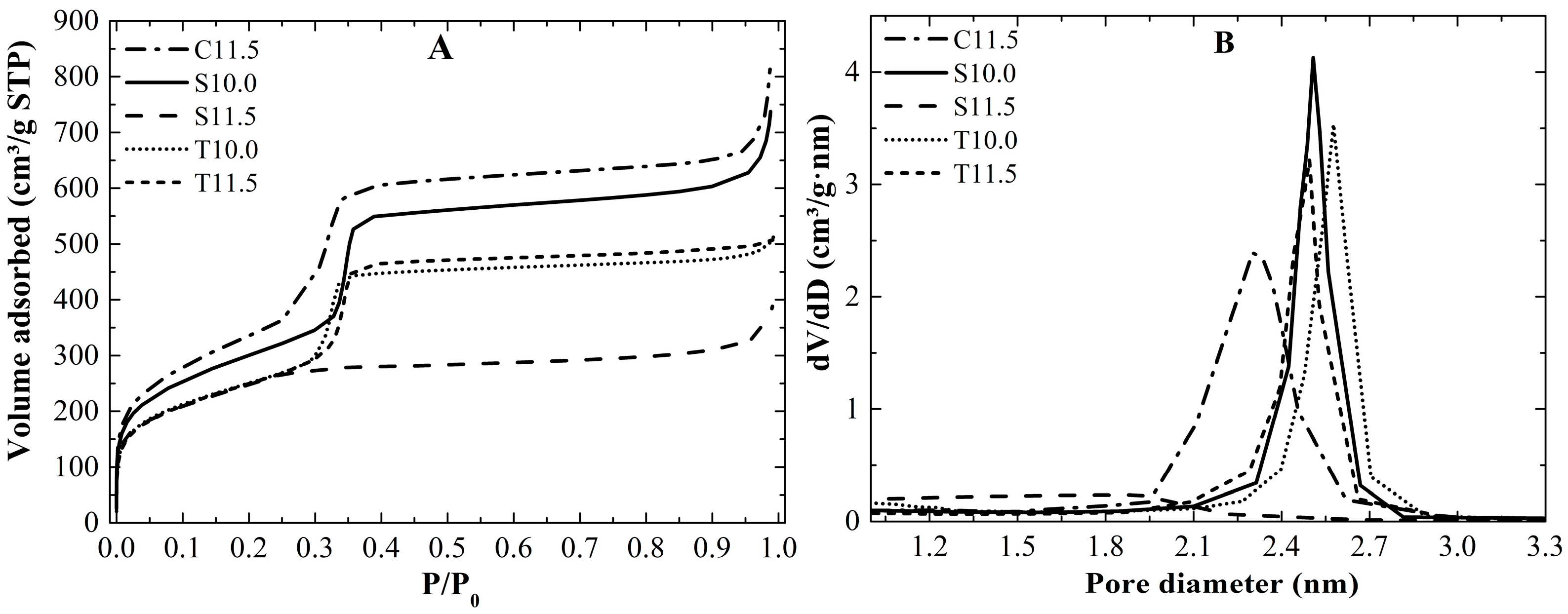

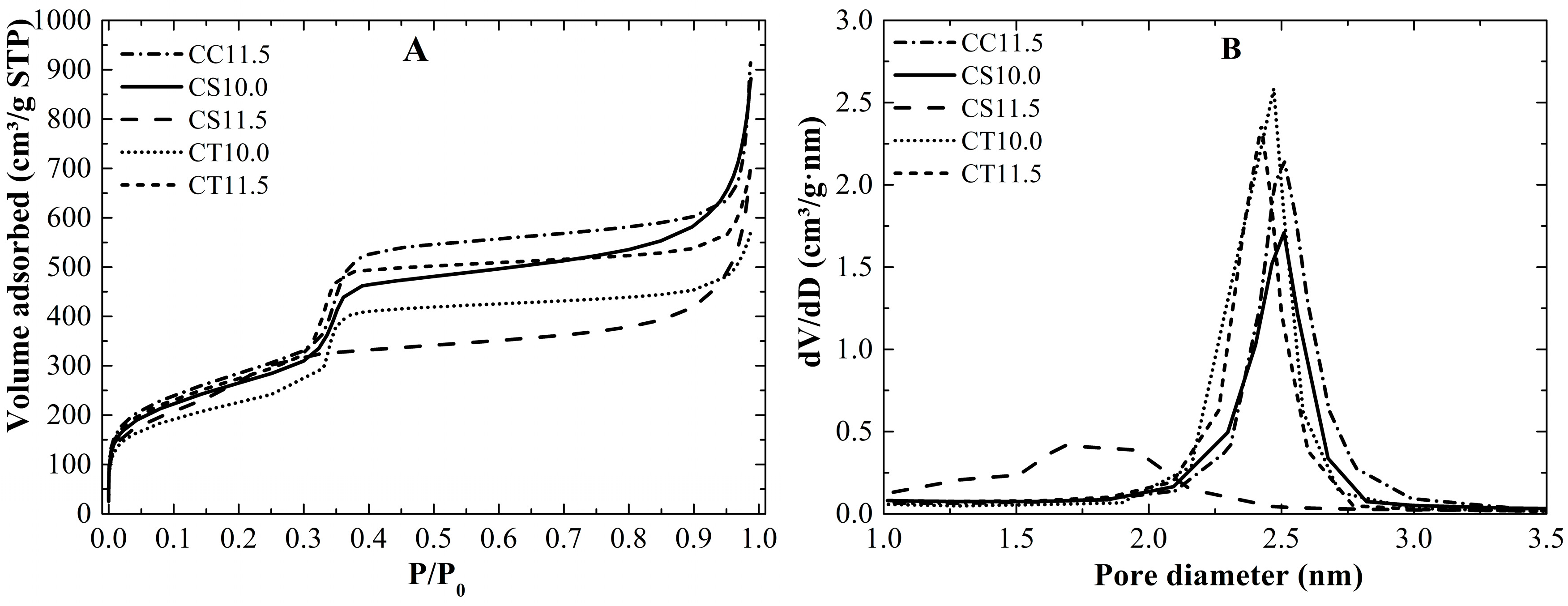

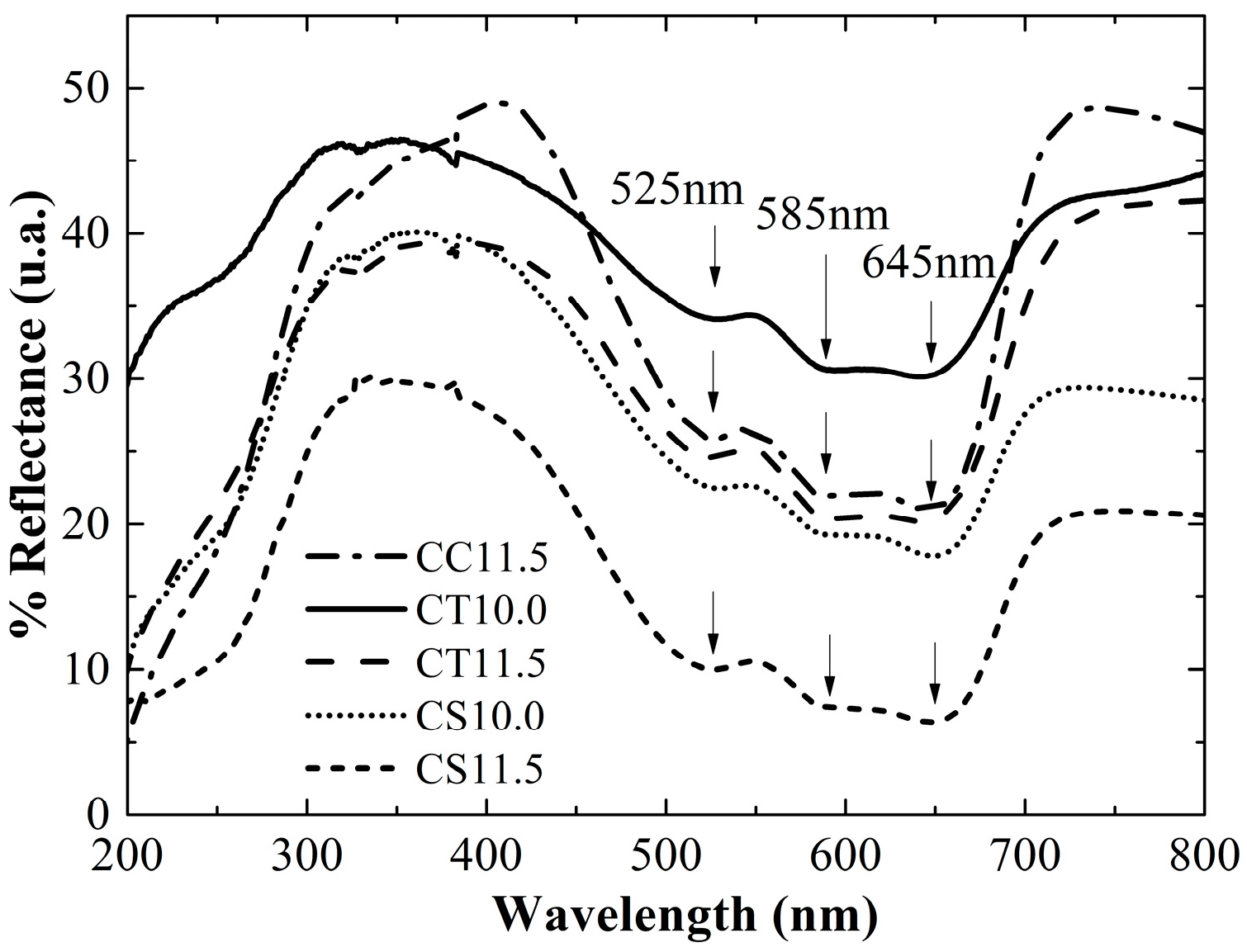
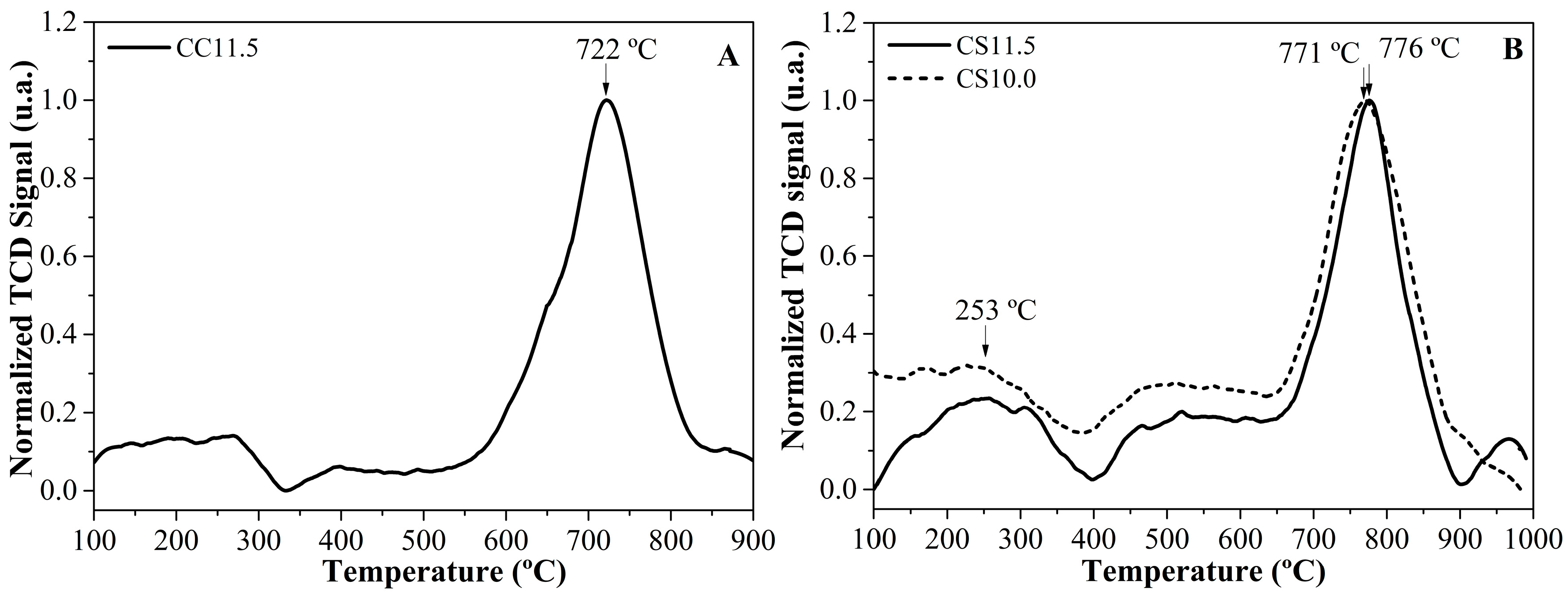

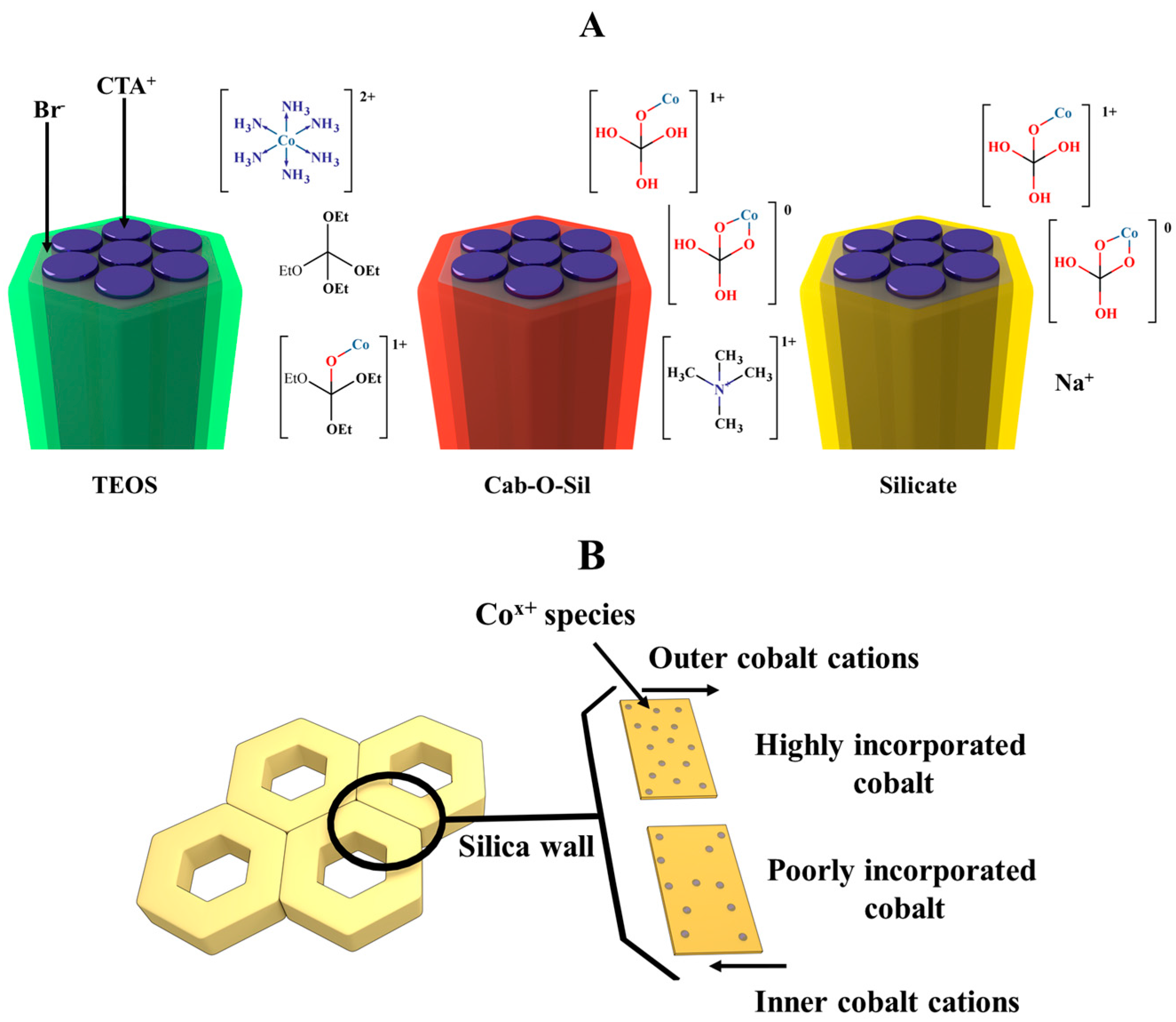

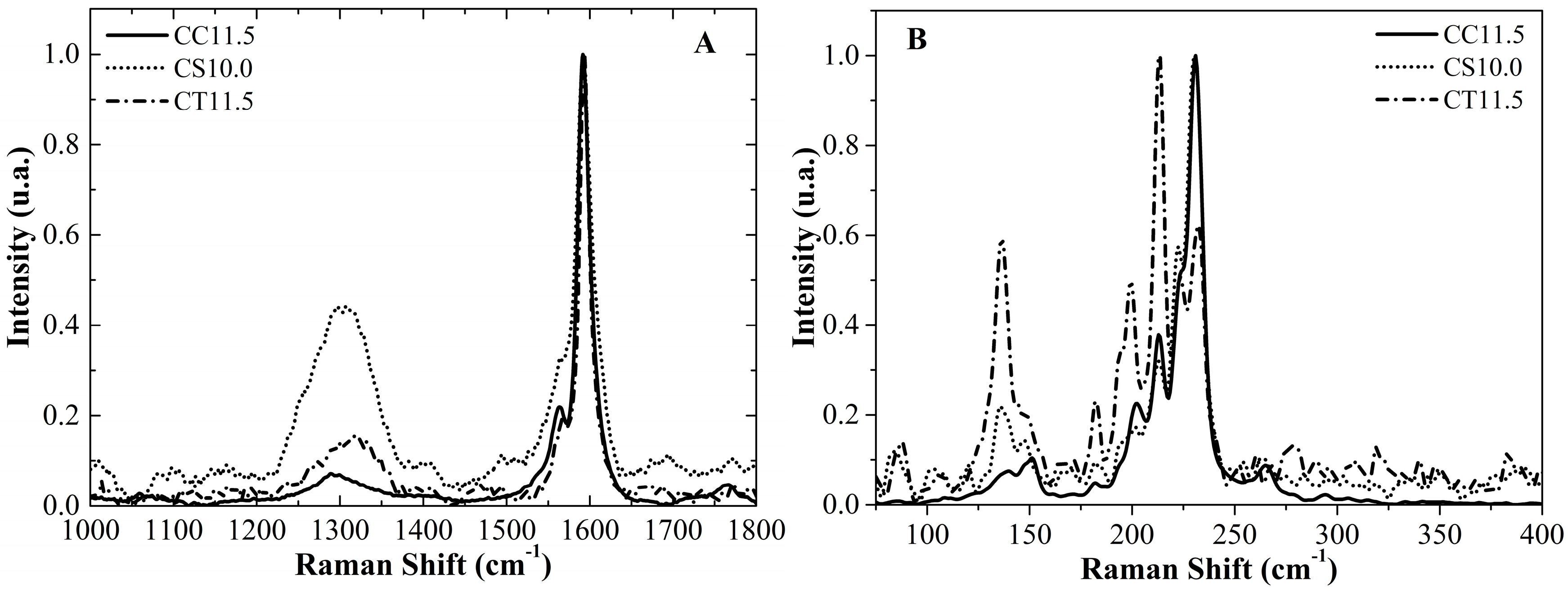
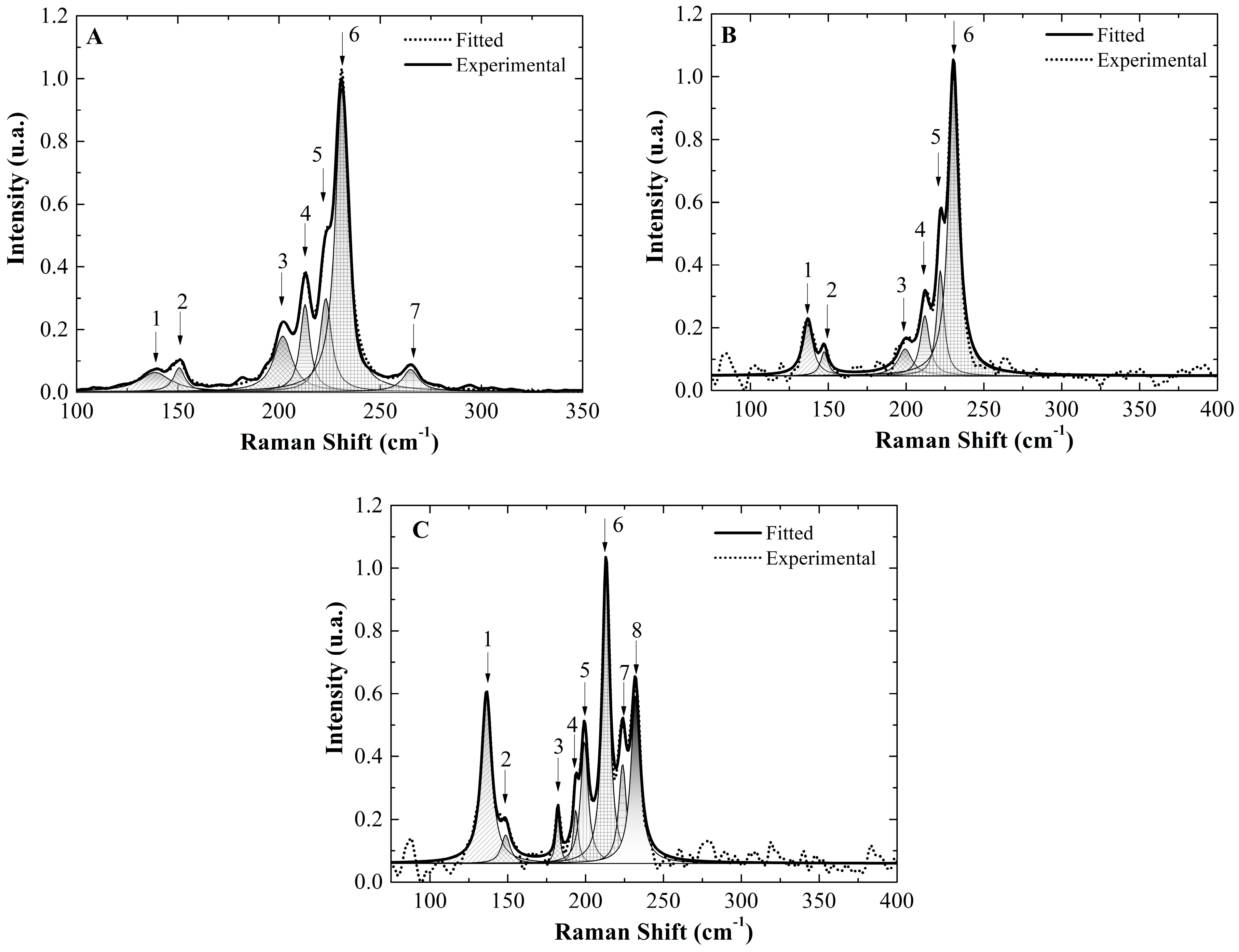
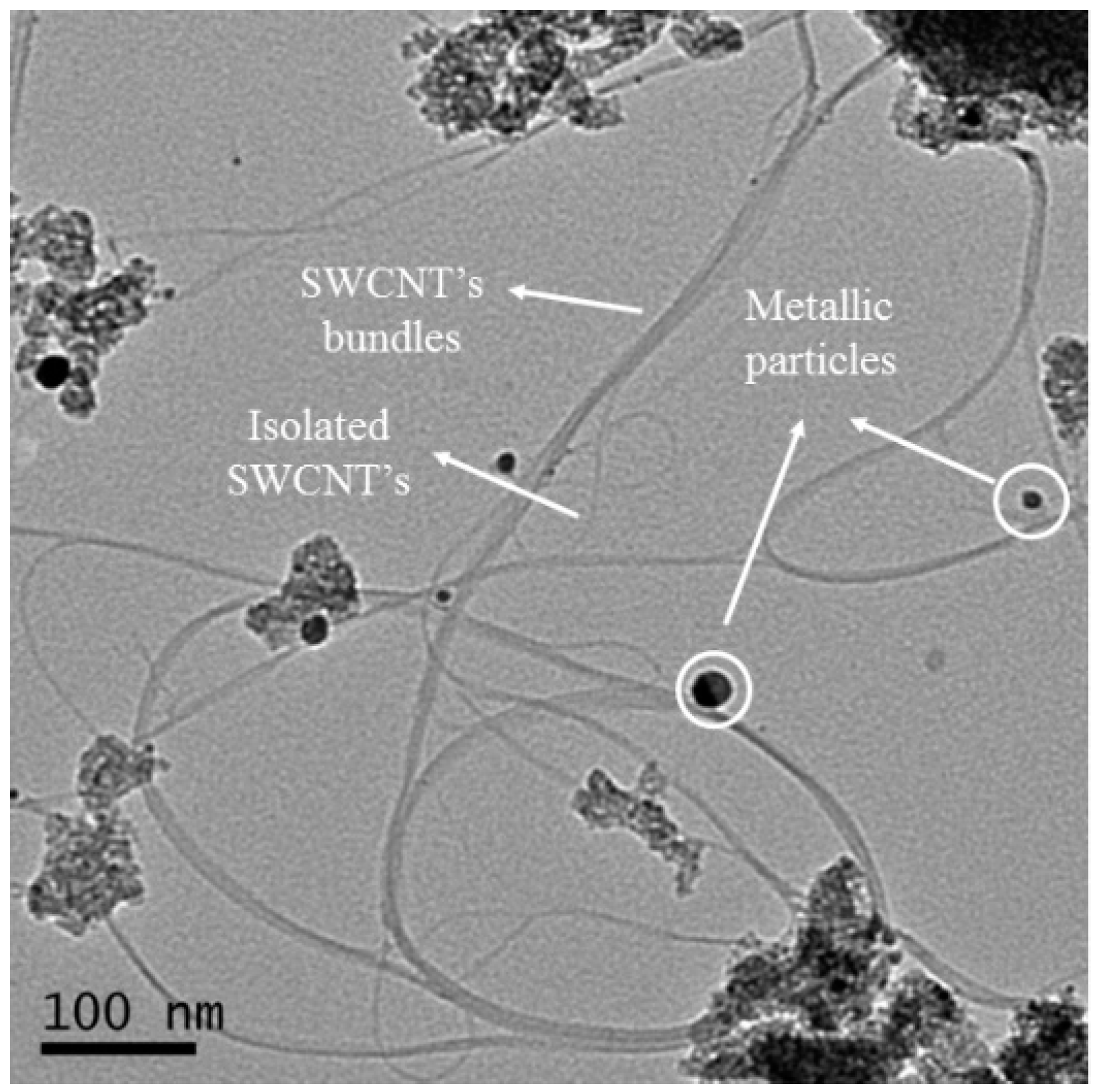
| Silica | SA (m2g−1) | Dp (nm) | DP FWMH (nm) |
|---|---|---|---|
| C11.5 | 1239.6 | 2.3 | 0.48 |
| S10.0 | 1080.2 | 2.5 | 0.25 |
| T10.0 | 902.3 | 2.6 | 0.16 |
| T11.5 | 899.6 | 2.5 | 0.16 |
| Silica | Dp (nm) | FWMH (nm) | 2Θ (°) | d100 (nm) | a0 (nm) | Wt (nm) |
|---|---|---|---|---|---|---|
| C11.5 | 2.3 | 0.48 | 2.22 | 3.97 | 4.58 | 2.3 |
| S10.0 | 2.51 | 0.25 | 2.45 | 3.6 | 4.16 | 1.7 |
| T10.0 | 2.58 | 0.16 | 2.17 | 4.06 | 4.69 | 2.1 |
| T11.5 | 2.49 | 0.16 | 2.15 | 4.10 | 4.74 | 2.2 |
| Catalyst | Catalyst SA (m2g−1) | ∆SA (m2g−1) | Silica Dp (nm) | Catalyst Dp (nm) | Co (%) # |
|---|---|---|---|---|---|
| CC11.5 | 1024.4 | 215.2 | 2.29 | 2.51 | 2.02 |
| CS10.0 | 957.1 | 123.1 | 2.49 | 2.46 | 1.66 |
| CS11.5 | NA | NA | NA | NA | 1.90 |
| CT10.0 | 810.9 | 91.4 | 2.55 | 2.41 | 1.99 |
| CT11.5 | 990.2 | -90.6 | 2.45 | 2.39 | 2.18 |
| Radial Breathing Mode (RBM) Peaks of the SWNCT Deposited on CC11.5 | ||||
| Peak Number | Raman Shift (cm−1) | Tube Diameter (nm) | Peak Area (cm−1. Intensity) | Population (%) |
| 1 | 138.76 | 1.8 | 1.82 | 7.6 |
| 2 | 150.67 | 1.7 | 0.82 | 3.4 |
| 3 | 201.87 | 1.2 | 3.06 | 12.8 |
| 4 | 212.87 | 1.2 | 2.53 | 10.6 |
| 5 | 223.10 | 1.1 | 3.22 | 13.4 |
| 6 | 231.00 | 1.1 | 11.45 | 47.7 |
| 7 | 265.01 | 0.9 | 1.08 | 4.5 |
| RBM peaks of the SWNCT deposited on CS10.0 | ||||
| Peak number | Raman shift (cm−1) | Tube diameter (nm) | Peak area (cm−1. Intensity) | Population (%) |
| 1 | 136.86 | 1.8 | 2.10 | 9.9 |
| 2 | 147.39 | 1.7 | 0.69 | 3.2 |
| 3 | 199.39 | 1.2 | 1.48 | 7.0 |
| 4 | 212.05 | 1.2 | 2.14 | 10.0 |
| 5 | 222.00 | 1.1 | 2.96 | 13.9 |
| 6 | 230.53 | 1.1 | 11.90 | 56.0 |
| RBM peaks of the SWNCT deposited on CT11.5 | ||||
| Peak number | Raman shift (cm−1) | Tube diameter (nm) | Peak area (cm−1. Intensity) | Population (%) |
| 1 | 136.34 | 1.9 | 6.59 | 22.2 |
| 2 | 148.66 | 1.7 | 0.97 | 3.3 |
| 3 | 182.19 | 1.4 | 0.76 | 2.6 |
| 4 | 193.68 | 1.3 | 0.99 | 3.3 |
| 5 | 199.24 | 1.2 | 3.53 | 11.9 |
| 6 | 213.13 | 1.2 | 8.10 | 27.3 |
| 7 | 223.75 | 1.1 | 2.96 | 10.0 |
| 8 | 232.00 | 1.1 | 5.79 | 19.5 |
© 2018 by the authors. Licensee MDPI, Basel, Switzerland. This article is an open access article distributed under the terms and conditions of the Creative Commons Attribution (CC BY) license (http://creativecommons.org/licenses/by/4.0/).
Share and Cite
Ramírez Rodríguez, F.; Giraldo, L.F.; Lopez, B.L. Silica Precursor Effect on the Physical and Chemical Properties of Cobalt Incorportated MCM-41 Catalysts and Their Performance towards Single Wall Carbon Nanotubes. C 2018, 4, 16. https://doi.org/10.3390/c4010016
Ramírez Rodríguez F, Giraldo LF, Lopez BL. Silica Precursor Effect on the Physical and Chemical Properties of Cobalt Incorportated MCM-41 Catalysts and Their Performance towards Single Wall Carbon Nanotubes. C. 2018; 4(1):16. https://doi.org/10.3390/c4010016
Chicago/Turabian StyleRamírez Rodríguez, Frank, Luis Fernando Giraldo, and Betty Lucy Lopez. 2018. "Silica Precursor Effect on the Physical and Chemical Properties of Cobalt Incorportated MCM-41 Catalysts and Their Performance towards Single Wall Carbon Nanotubes" C 4, no. 1: 16. https://doi.org/10.3390/c4010016





